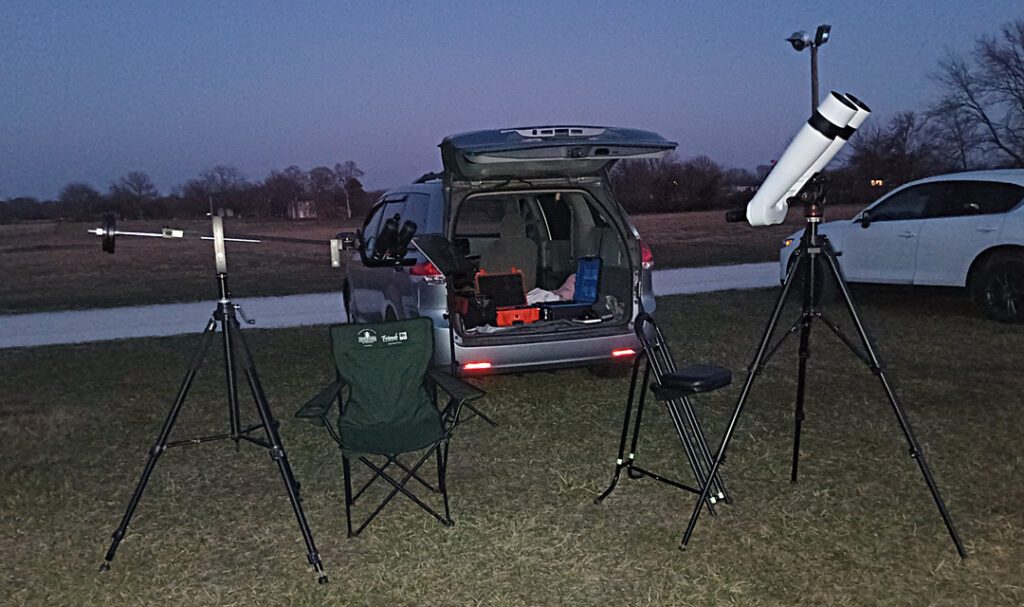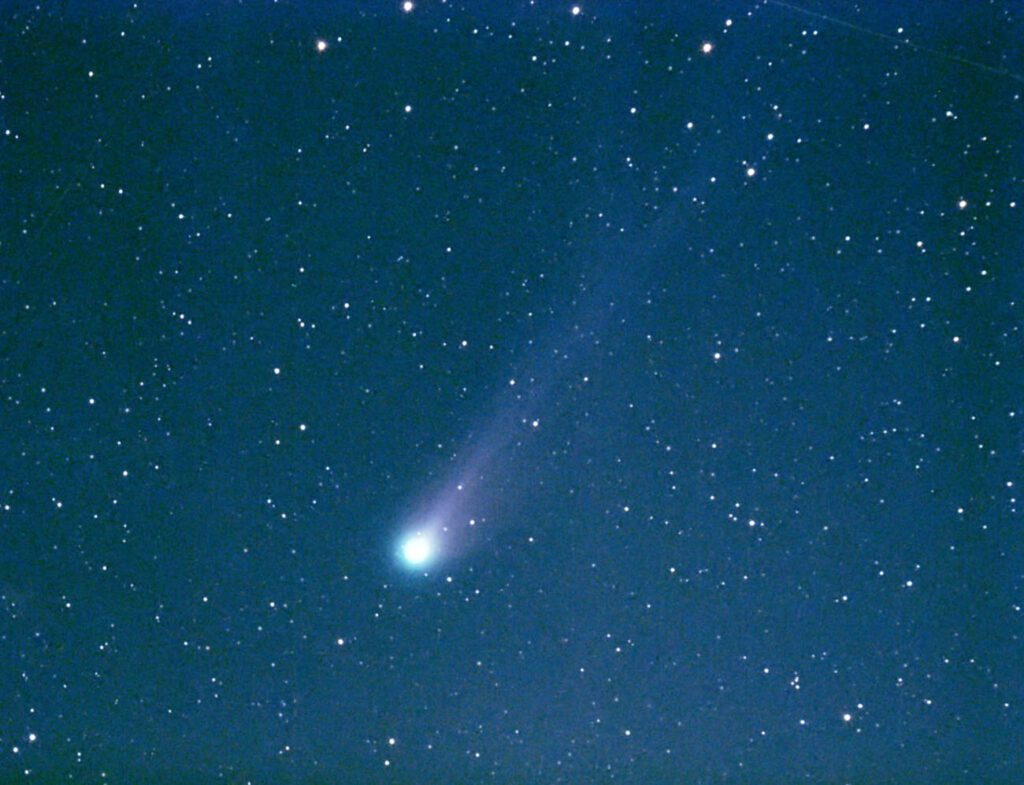After a cold, cloudy, and schedule conflicted January and February, March got off to a good binocular astronomy start thanks to an invitation from Bill Barlow to join him for observing at Lewis-Young park in Louisburg, Kansas Friday, March 1, on a clear if somewhat chilly evening. And I forgot to bring my electric hand warmers, which would have been a boon. I arrived around six to find fellow ASKC club member Tom Harness already setting up. Bill and Dave Hudgins arrived minutes later. An SQM-L meter reading taken later in the evening recorded 20.20 mpsas, which is typical for Lewis-Young park.

Shown above are my Oberwerk 120XL-SD binocular telescope (right) and the Nikon 10×50 WX on a Farpoint parallelogram mount. Also along for the session were the Oberwerk 10×50 and 15×70 Ultra binoculars.
Bill told us he planned to observe comet 12P/Pons-Brooks, which I had never heard of, although it is one of the brightest periodic comets, having an orbital period of 71 years. It was first discovered in 1812. Bill had no trouble locating it with his new 8-inch Celestron SCT, in Pegasus, far to the west. I wandered over for a peek, and Bill showed me the location on his chart. Within a few minutes I had it located with the 120XL-SD with 20mm Pentax XW eyepieces (33.5x). It was very bright with an offset core and a faintly visible tail. It was a highlight of the session, and I was pleased to have observed it. Thank you, Bill! 🙂

On a subsequent evening (Saturday 9 March 2024) Dave returned to Powell Observatory and captured this beautiful image of the comet with his new Sky Watcher 50mm APO refractor.
Also during the session on Friday 1 March I observed numerous winter open clusters, including a splendid view of M 35 with the Nikon 10×50 WX, at 9 degrees the widest field I have viewed it in with any instrument. I was keen to observe the open cluster M 48 in Hydra, following up on this Cloudy Nights binocular forum topic started by retired librarian and mystery and science fiction novelist Dale Smith.
Somewhat to my surprise M 48 (and the open cluster M 41 in Canis Major) were underwhelming viewed with the 120XL. Both are large and loose clusters, M 48 appearing like a fainter version of M 41, and in the two degree FOV of the 120XL neither was well separated from the surrounding star field. The view with the Oberwerk 15×70 Ultra on the parallelogram mount (4.2 degrees) was more enjoyable. Unexpectedly, my favorite views of both clusters were with handheld 10×50 binoculars. The clusters were easily seen and well-separated in the generous 6-6.5 degree fields of these instruments.


Great post Fikse, its been a minute! Il also be chasing M48 at some point following Dale’s post
Hey Wrighty! 🙂 Sorry not to have seen your comment sooner. I’ve been keeping an eye on M 48 in recent weeks. Really happy Dale made that Cloudy Nights post about it. A few evenings ago, with a bright waxing gibbous moon, which I was mostly visiting Lynx the Lovelorn (upcoming post), I had a quick peek at M 48 with the 70XL+20XW eyepieces (19.5x) and could view it without difficulty.